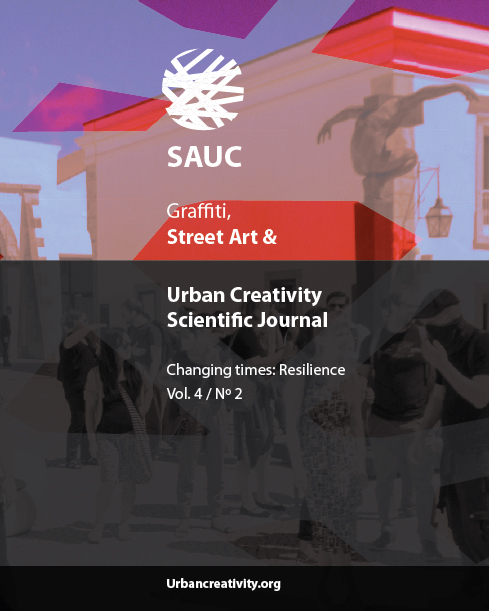Grupo OPNI graffiti and urban violence in present-day Brazil
DOI:
https://doi.org/10.25765/sauc.v4i2.153Keywords:
São Paulo, Violence, Graffiti, Inequality, Hip Hop, PeripheryAbstract
São Paulo is the largest city in Latin America. In addition to its metropolitan and peripheral regions, there are more than 22 million people. All kind of reality is in the 1.520 km2 that extends its territory. From super millionaires who own huge houses of 10/20 million euros with 10.000 m2 of built area, with helipads and Ferraris in the garage, to wooden houses with 20/30 m2, without connection to the light and water network, with open sewage to your door. Nothing more violent and aggressive than this veiled socioeconomic segregation. Often this is observed within a radius of 5 km away, exposing and depicting a glaring inequality. The vast majority of this poor and excluded population is black. In this context, the Brazilian Hip Hop movement emerged in the 1980’s, in the central region of São Paulo, which gave voice to the latent social problems of the metropolis. This is how the São Paulo graffiti, that spans the walls and concrete of the grey city is born, an ideal platform to express social problems and portray the colours and concepts of the new born musical movement. In this context, in 1997, in São Mateus, the far east of the city, the collective of urban art and graffiti Grupo OPNI was born, which remains alive and active, contradicting all unfavourable statistics.
Downloads
Global Statistics ℹ️
|
168
Views
|
0
Downloads
|
|
168
Total
|
|
Downloads
Published
How to Cite
Issue
Section
License
Those authors who publish in this journal accept the following terms:
-
Authors retain copyright.
-
Authors transfer to the journal the right of first publication. The journal also owns the publishing rights.
-
All published contents are governed by an Attribution-NoDerivatives 4.0 International License.
Access the informative version and legal text of the license. By virtue of this, third parties are allowed to use what is published as long as they mention the authorship of the work and the first publication in this journal. If you transform the material, you may not distribute the modified work. -
Authors may make other independent and additional contractual arrangements for non-exclusive distribution of the version of the article published in this journal (e.g., inclusion in an institutional repository or publication in a book) as long as they clearly indicate that the work was first published in this journal.
- Authors are allowed and recommended to publish their work on the Internet (for example on institutional and personal websites), following the publication of, and referencing the journal, as this could lead to constructive exchanges and a more extensive and quick circulation of published works (see The Effect of Open Access).













